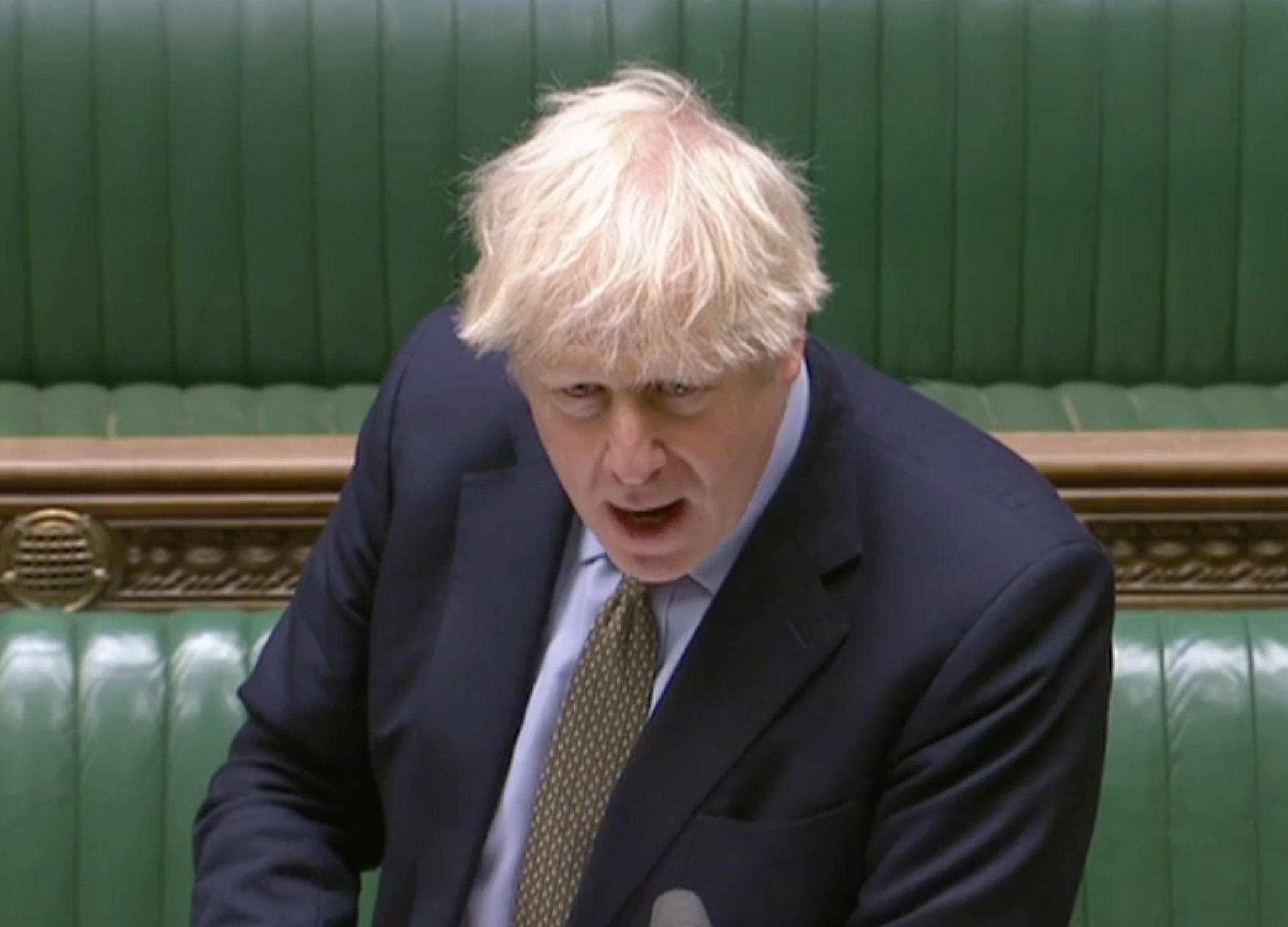The Independent's journalism is supported by our readers. When you purchase through links on our site, we may earn commission.
The Tory tail is wagging the government dog over lockdown and Keir Starmer has taken full advantage
Starmer’s call for a ‘circuit-breaker’ lasting two or three weeks is a clever move, leaving Johnson stuck in a rut of his own making


Last night’s symbolic revolt by 42 Tory MPs against the 10pm curfew for pubs and restaurants highlights the pressure Boris Johnson is under from the “economy first” faction of his own party.
But the Tory tail is wagging the government dog. It helps to explain why the prime minister rejected the call by the Scientific Advisory Group for Emergency Group for Emergencies (Sage) three weeks ago for a two-week “circuit-breaker” national lockdown. His noisy backbenchers, including many fellow Brexiteers, and a last-minute intervention from Rishi Sunak, were strong enough to turn Johnson against the idea.
Keir Starmer’s call for a “circuit-breaker” lasting two or three weeks is a clever move. In the short-term, it makes it harder for Johnson to go down this route. He will not want Labour to cry “U-turn” (again) and say “we told you so” (again). If the three-tier system of restrictions taking effect in England today doesn’t bring down the rising infection rate, Johnson knows Starmer will criticise him for failing to take Sage’s advice. According to a Sage paper, the proposal could reduce the number of deaths by the end of this year from about 19,900 to 12,100.
Starmer’s move potentially drives a wedge between Johnson and the public. According to YouGov, 54 per cent of people believe the government should have introduced a period of national lockdown last month, while 28 per cent opposed the idea.
It was also clever of Starmer to offer Labour’s support in Commons votes, which would enable Johnson to outgun the “livelihoods before lives” rebels who already think he has gone too far. No PM wants to be in the uncomfortable position of relying on opposition votes.
It’s an old opposition trick. David Cameron used his first appearance as Tory leader at prime minister’s questions to offer to back Tony Blair’s schools reforms, which were under fire from some Labour MPs. Blair relied on Tory frontbench support in the Commons vote for war in Iraq, with 150 Labour MPs refusing to support him. If Johnson took up Starmer’s offer, his fractious Tory MPs would hate it, and become even more rebellious.
The offer potentially shields the Labour leader from Johnson’s inevitable attack that he is an opportunist who is “playing politics”. Starmer chose the right moment to end the political consensus on the pandemic. He certainly scored a media bullseye, leading last night’s TV bulletins and hitting today’s front pages, not easy for an opposition during a national crisis. Sage’s proposal gave him cover. He can now answer the “what would you do?” question and puncture Johnson’s Thatcher-like claim that there is no alternative to his strategy. It also responds to pressure from Labour MPs for him to dial down the “constructive” bit of his “constructive opposition” because the government’s approach is manifestly failing.
Johnson’s problem is that, despite his initial rejection of Starmer’s proposal, he might well end up with no alternative to it soon. True, a “circuit-breaker” lockdown would postpone rather than prevent a further increase in infections. But the figures are rising worryingly. The government will almost certainly have to go further and soon. Some ministers think a “circuit-breaker” clampdown around the October schools half-term is very likely. Otherwise Johnson would risk the wounding charge of repeating his mistake at the start of the pandemic by acting too slowly. He had a chance to put them right in the second wave, and ensure a better overall verdict at the eventual inquiry into the government’s response, but he is blowing it.
Johnson’s “balanced approach” might sound good at first hearing but cannot deliver its twin goals of protecting public health and the economy at the same time. He is pleasing neither the scientific advisers and majority of the public who want a tougher approach or the minority of Tory MPs pressurising him to relax the existing restrictions. Splitting the difference between those on either side of the debate and sitting on the fence is not a strategy for someone who needs to lead from the front with a clear message and take the country with him. His much-vaunted simplified system of restrictions is still complicated, and the financial support for businesses and individuals affected riddled with holes.
At present, Johnson is stuck in a rut of his own making, with a messy compromise that won’t save either lives or livelihoods.



Join our commenting forum
Join thought-provoking conversations, follow other Independent readers and see their replies
Comments